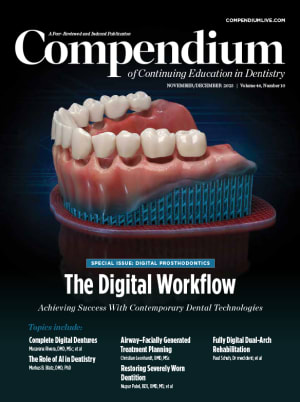In this case, the adolescent patient presented with peg lateral incisors, and the maxillary right canine and first premolar were in swapped positions. The orthodontist (Overlake Orthodontics) did an excellent job positioning the teeth to allow for post-orthodontic restorations with a modified technique using a single-shade composite system (OMNICHROMA, Tokuyama Dental,
omnichroma.com). The treatment goals were to make tooth No. 5, which was in the No. 6 position, look like a canine, and make the peg lateral incisors appear normal in size and shape. First, the patient was able to whiten the teeth (Zoom!, Philips), during which time a diagnostic wax-up and silicone putty index were fabricated in preparation for the bonding appointment. A carbon dioxide (CO2) laser was used without anesthetic to contour the gingival zeniths and prepare the surface of the enamel for bonding. The layering technique used for this single-shade composite system mimics that of a polychromatic layering composite: a palatal shell with OMNICHROMA, followed by OMNICHROMA BLOCKER to replicate dentin, another thin layer of OMNICHROMA, colored resin stains (Estelite® Color, Tokuyama Dental), and a final topcoat of OMNICHROMA. As seen in this case presentation, following this technique with a single-shade composite system enabled highly esthetic results.
KEY TAKEAWAYS
Indicated for both direct anterior and posterior restorations, OMNICHROMA single-shade composite and OMNICHROMA BLOCKER can be used in a layering technique that mimics that of a polychromatic layering composite to achieve highly esthetic outcomes.
Utilizing Smart Chromatic Technology and supra-nano spherical fillers, OMNICHROMA universal composite is capable of shade-matching any tooth color from A1 to D4, streamlining the restorative process.
In addition to exceptional color matching, OMNICHROMA single-shade universal composite offers strength, durability, versatility, and high polishability, along with excellent physical-mechanical properties.
Kevin Brown, DDS
Private Practice, Bellevue, Washington; Accreditation, American Academy of Cosmetic Dentistry

Figure 1
Fig 1. Full-smile view of post-orthodontic tooth positioning. Note that the maxillary right canine and premolar were swapped in position.

Figure 2
Fig 2. Retracted close-up view of post-orthodontic tooth positioning.

Figure 3
Fig 3. Diagnostic wax-up on a 3D-printed (Sprintray) model and silicone putty index (Burkhart Dental Supply).

Figure 4
Fig 4. Gingival contouring and enamel surface preparation were completed with a CO2 laser (Solea®, Convergent Dental).

Figure 5
Fig 5. Silicone putty index was used to create a thin palatal shell using OMNICHROMA.

Figure 6
Fig 6. View of the palatal shell in place without the putty index.

Figure 7
Fig 7. OMNICHROMA BLOCKER was used to mimic dentin.

Figure 8
Fig 8. A very thin layer of OMNICHROMA was used along the incisal one-third.

Figure 9
Fig 9. Colored resins (Estelite Color) and a sable brush were used to create incisal effects.

Figure 10
Fig 10. A final topcoat of OMNICHROMA was applied.
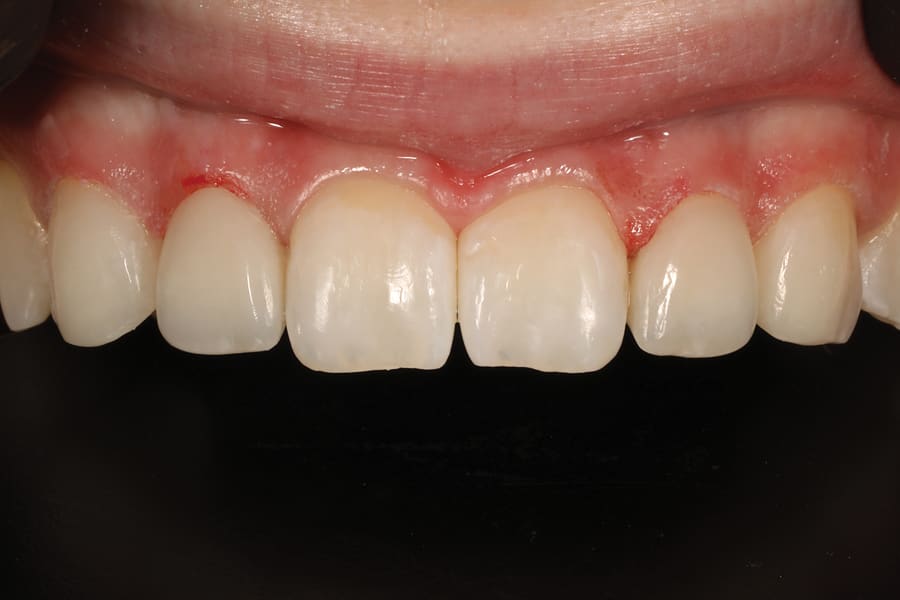
Figure 11
Fig 11. Immediate postoperative view of the finished restorations on teeth Nos. 6, 7, and 10.
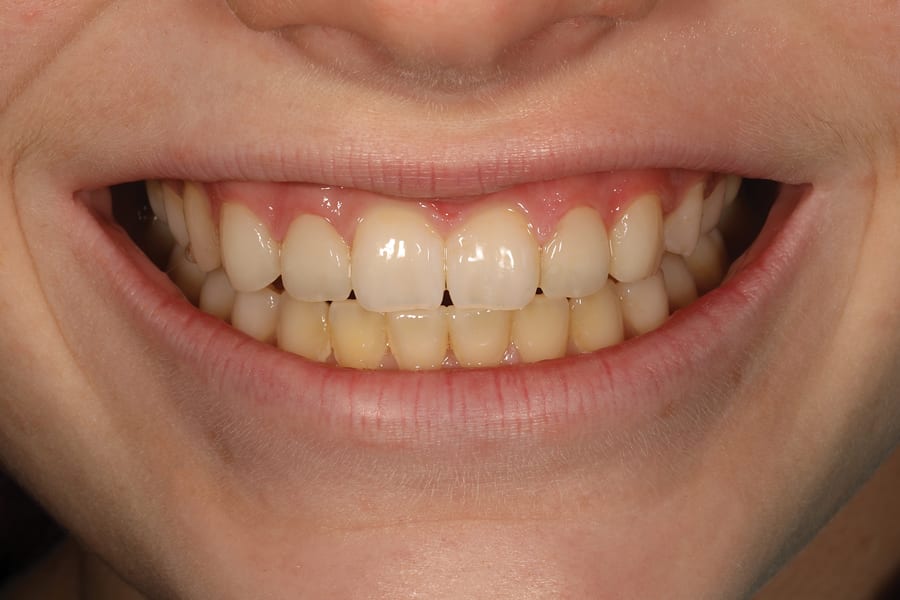
Figure 12
Fig 12. Full-smile view at 1-week follow-up.
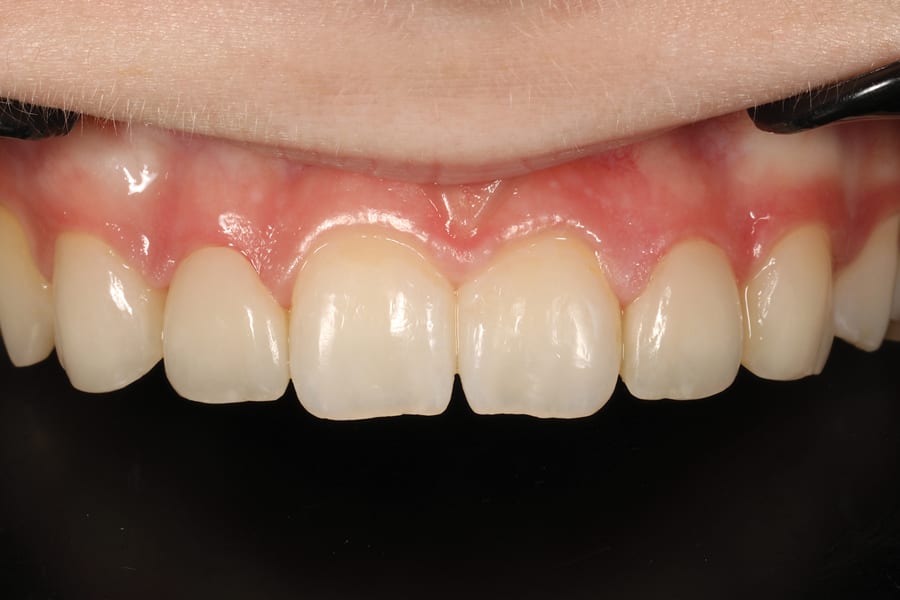
Figure 13
Fig 13. Retracted close-up view at 1-week follow-up.
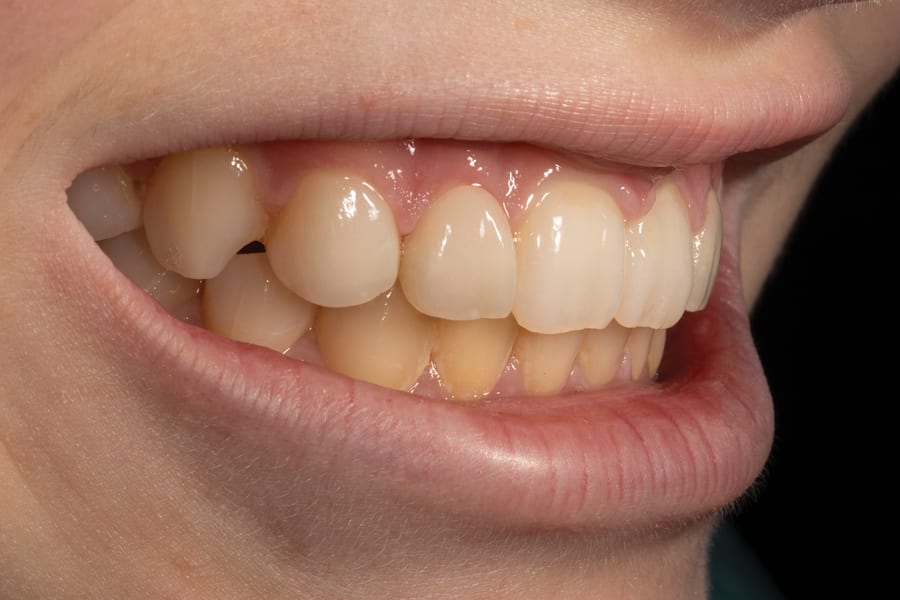
Figure 14
Fig 14. Right lateral view with front lighting at 1-week follow-up. The layering technique used with the OMNICHROMA single-shade composite system produced highly esthetic results, with which the patient was extremely pleased.
